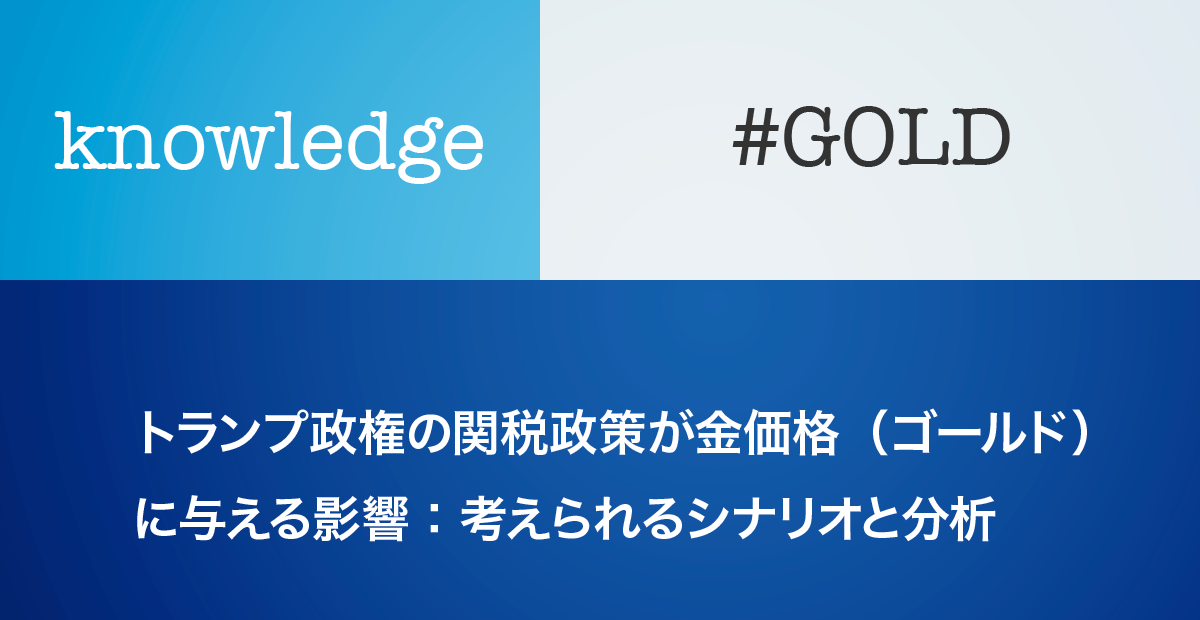This site is a great place for me (@mifsee)が個人的に学びながら企業分析や銘柄分析を進め、その過程を記録としてまとめているものです。
あくまで個人の調査・整理を目的とした内容であり、誤りや実際と異なる情報が含まれる可能性があります。
また、MifseeではAI技術を活用した運用や、技術習得を目的とした実験的な取り組みも行っています。ご覧いただく際には、その点をご理解のうえご利用ください。
- Factors and updates on taking tariff measures
- 1. scenario in which the U.S. raises tariffs and trade friction intensifies
- Scenario in which the U.S. imposes tougher tariffs on China and China retaliates with tariffs
- 3. scenario in which the U.S. tightens tariffs on Canada and Mexico
- 4. scenario in which the U.S. eases or eliminates tariffs
- 5. a scenario in which the U.S. flexibly manages its tariff policy
- summary
Factors and updates on taking tariff measures
Need to protect domestic industry
The Trump administration is using tariffs as a bargaining card, aiming to protect domestic jobs and manufacturing. The current situation in the U.S., where competition with foreign products is intensifying, especially in automobiles, energy, and steel and aluminum products, calls for the strengthening of domestic industry.
Immigration and illegal drug control and political advocacy
The tariff increase is also being used as a political message against the problems of illegal immigration and the influx of drugs such as fentanyl. By taking a hard-line stance on these issues, the government aims to solidify its support base. Partner countries are also forced to take countermeasures and negotiate in order to protect their own security and the lives of their citizens.
Global Supply Chain Restructuring
In response to the unilateral tariffs imposed by the Trump administration, companies in various countries are reviewing their supply chains and diversifying their production bases. In fact, surveys of Japanese companies in the U.S. have reported that they are reorganizing their local production and procurement bases as a countermeasure.
Retaliatory tariffs and pressure for international negotiations
Partner countries may implement retaliatory tariffs in response to high U.S. tariffs or use international trade rules (WTO, etc.) as a shield for negotiations. These moves are inevitable measures for governments and companies to minimize the impact of trade friction.
1. scenario in which the U.S. raises tariffs and trade friction intensifies
background
On February 1, 2025, President Trump announced tariffs of 25% on imports from Canada and Mexico and 10% on imports from China.
This measure is based on the declaration of a state of emergency to prevent the influx of the synthetic drug fentanyl.
affect
- Rising inflation fears → Gold (Gold) prices rise
- Rising prices for imported goods may cause prices in the U.S. to rise. This will increase demand for gold as an inflation hedge.
- Increased risk aversion in the market → Gold (Gold) price rise
- Intensifying trade friction will lead to deteriorating corporate earnings and slowing economic growth, which will increase investors' risk aversion. As a result, investment in gold, a safe asset, will increase.
- Stronger dollar → downward pressure on gold (gold) prices
- The tariff increase could increase capital inflows to the U.S. and cause the dollar to appreciate. A stronger dollar will depress the dollar-denominated price of gold.
Overall view
In the short term, gold prices are likely to rise due to inflation fears and heightened risk aversion. However, a stronger U.S. dollar may limit that rise.
Scenario in which the U.S. imposes tougher tariffs on China and China retaliates with tariffs
background
We envision a situation where trade friction between the U.S. and China resurfaces, with the U.S. raising tariffs on Chinese imports and China imposing tariffs on U.S. imports as a retaliatory measure.
affect
- Fears of global economic slowdown → Gold (Gold) prices rise
- Economic activity in both the U.S. and China will stagnate, raising concerns that overall global economic growth will slow. This will increase demand for gold as a safe-haven asset.
- Fluctuations in China's domestic gold demand
- A slowdown in China's economic growth could reduce domestic demand for gold. On the other hand, a depreciation of the renminbi could increase demand for gold as a means of asset protection.
Overall view
While fears of a global economic slowdown will push gold prices higher, developments in Chinese domestic gold demand could affect prices. Overall, the gold price is expected to show an upward trend
3. scenario in which the U.S. tightens tariffs on Canada and Mexico
background
Assume a situation where the United States increases tariffs on imports from Canada and Mexico, affecting the North American Free Trade Agreement (NAFTA) framework.
affect
- Increased uncertainty in North American economy → Gold (Gold) price rise
- Due to the strong economic ties in the North American region, tariff increases will disrupt supply chains and increase economic uncertainty. This will cause investors to move more of their money into gold, a safe-haven asset.
- Slowing economic growth in Canada and Mexico
- Since the economies of both countries are heavily dependent on exports to the U.S., a tariff increase could slow economic growth and cause a decline in the value of their currencies. How this will affect gold demand will depend on the economic situation in each country.
Overall view
Increased economic uncertainty in the North American region could drive gold prices higher. However, caution should be exercised as the economic conditions in Canada and Mexico may have different effects on gold demand.
4. scenario in which the U.S. eases or eliminates tariffs
background
Assume a situation where the U.S. eases or eliminates tariffs on its major trading partners to improve the trade environment.
affect
- Decrease in inflationary pressure → Gold (Gold) price decline
- Lower prices for imported goods and less inflationary pressure will reduce demand for gold as an inflation hedge.
- Strengthening risk-on mood in the market → Gold (Gold) price decline
- An improved trade environment will increase investors' risk appetite, leading to increased investment in risky assets. As a result, funds may flow out of gold, a safe asset.
- Weak dollar → upward pressure on gold prices
- Eased tariffs could increase the U.S. trade deficit and weaken the dollar. A weaker dollar will push up the dollar-denominated price of gold.
Overall view
The easing or elimination of tariffs will put downward pressure on the gold price due to lower inflationary pressures and a stronger risk-on mood, while a weaker dollar will put upward pressure on the price. These factors offset each other, and the trend in the gold price could be uncertain.
5. a scenario in which the U.S. flexibly manages its tariff policy
background
Assume a situation where the U.S. maintains its tariff policy but operates flexibly, such as adjusting tariff rates for some items or countries.
affect
- Continued market uncertainty → Gold (Gold) price direction uncertain
- Continued uncertainty about tariff policies will affect business investment decisions and consumer purchasing behavior, increasing uncertainty about economic activity. This may make it more difficult to determine the direction of the gold price.
- Impact on specific sectors
- If the application of tariffs is limited to certain items or sectors, it could affect the performance of those sectors and the supply chain, and related market developments could have a ripple effect on the gold price.
Overall view
Flexible application of tariff policies could lead to volatility in the gold price as market uncertainty persists. The impact on specific sectors or commodities may spill over into the gold market.
summary
The impact of U.S. tariff policy on the gold price varies widely depending on the nature and scope of the policy and the response of trading partners. Below is a summary of each scenario and its impact on the gold price.
| scenario | Impact on the Price of Gold (Gold) | Main Factors |
|---|---|---|
| 1. tariff hikes and intensifying trade friction | rising | Concerns about inflation, increased risk aversion |
| 2. tougher tariffs and retaliatory tariffs between the U.S. and China | rising | Concerns about global economic slowdown, increased demand for safe assets |
| 3. tougher tariffs on Canada and Mexico | rising | Increased uncertainty in North American economy, increased demand for safe assets |
| 4. tariff relaxation/elimination | opaque | Declining inflationary pressure and downward pressure due to risk-on mood, upward pressure due to dollar depreciation |
| 5. flexible application of tariff policies | instability | Continued market uncertainty, impact on specific sectors |
Because of the combined effect of these factors on the gold price, it is important to keep a close eye on future tariff policy developments and international developments.
I'm making use of it too! Get the most out of moomoo securities!
I am.moomoo SecuritiesWhat I like most about using the app is that it is easy to use and makes it easy to gather in-depth information, which is important in investing.
Further,Ability to see trends of large and medium investors.and it has been very helpful in considering the future of the stocks.A wealth of news and earnings-related information on each stock, with support for automatic Japanese translationThe company is also happy to provide instant access to information from overseas.
Moomoo Securities also has the lowest U.S. stock trading commissions.
Interested parties can easily register through this banner link!




